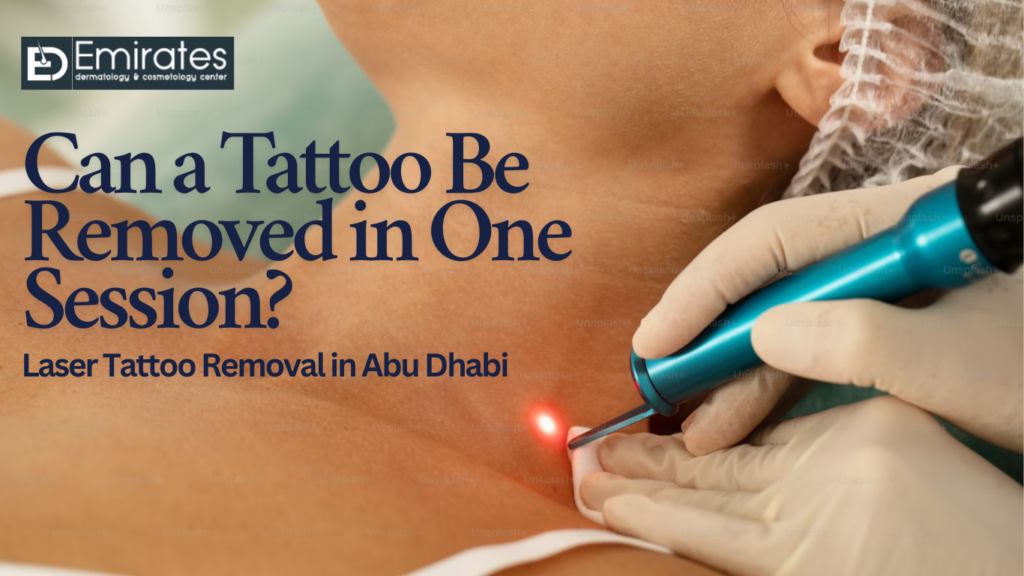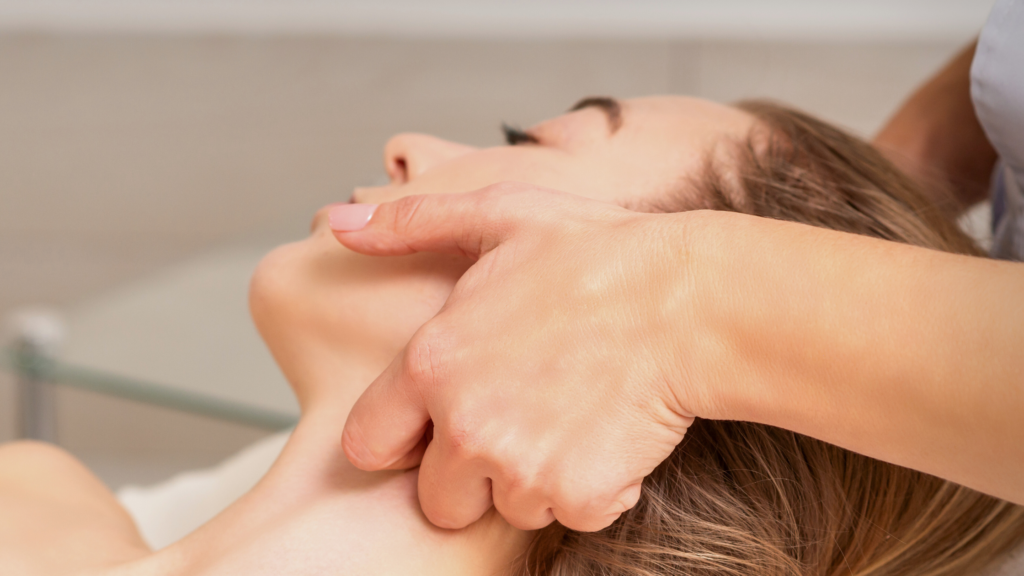Tattoo removal, especially through laser treatments, is a gradual process that requires multiple sessions to break down the ink particles effectively.
‘’I’m from a nice, suburban, middle-class family, but my tattoos remind me where I’ve been.’’ — said Tom Hardy, the legendary actor known for his iconic roles in Hollywood films.
This would be the simplest but most powerful thing someone could ever say about tattoos. It’s like imprinting a part of your identity and past on yourself. Tattoos help you make a statement without being articulate, and is one of the most artistic ways of expressing yourself. A manifestation of something etched in your brain, becomes literally etched on your body with a tattoo. It’s also a way to show your fondness to someone so important in your life.
But in some instances, you change your mind. Sometimes your outlook on thighs changes. Sometimes a person who once used to be so cardinal in life is now a distant memory whom you want to forget. Sometimes you just get bored with looking at the same tattoo again and just want a new one. Removing what’s etched on your mind is completely up to you but what about what’s etched on your body?
Removing a tattoo is not as easy as getting one but it’s not something of a big hassle. If you remember the pain while getting a tattoo, you must have wondered how painful it is to remove it. You got the tattoo in one session but is it possible to remove a tattoo in one session? How is it done anyway?
The answers are not black and white but they’re not difficult to wrap your head around. In this comprehensive guide, we’ll answer all your questions and help you understand everything you need to know about tattoo removal, including the process, time frame, aftercare, and how to choose the best tattoo removal service in Abu Dhabi.
Can a Tattoo Be Removed in One Session?
The short answer is no. Most tattoos cannot be fully removed in a single session and typically requires two to five sessions. As you know tattoos are permanent design or markings made on the skin by inserting ink, dyes, or pigments into the dermis layer using needles. To remove the tattoo, you might have to go through multiple sessions to break down the ink particles effectively. It’s a gradual process that needs to be carried out carefully.
Although, the size, color, location, and age of the tattoo play a role in determining how quickly it fades. While some may see significant fading after one session, complete removal typically takes time and multiple treatments.
How Does Laser Tattoo Removal Work?
The most popular and the most effective way of removing a tattoo would be laser tattoo removal. In the procedure, your tattoo is exposed to high-intensity laser beams that penetrate the skin and break the tattoo pigments down into smaller particles. Cosmetologists use different laser technologies depending on the colors of the tattoo ink. For instance:
- Q-switched lasers: They are commonly used for their ability to target different ink colors, especially on darker inks like black & blue. Q-switching refers to a technique that allows the laser to produce high-intensity, short pulses of energy in nanoseconds.
- Pico lasers: They offer quick results by breaking ink down into even smaller particles. The name comes from a picosecond, which is how much the laser pulse lasts. They work well on difficult-to-remove colors like blue, green, and yellow.
After the laser treatment is done, your body’s immune system comes into play as it flushes out these fragmented ink particles and results in the gradual fading of the tattoo.
How Many Sessions to Remove a Tattoo Completely?
Like we mentioned, there is no definite number as the number of sessions needed for complete tattoo removal varies based on multiple factors:
- Tattoo size: Larger tattoos have more ink embedded in your skin so the laser needs to break down a greater volume of ink pigment. Your immune system has a limit on the amount of ink it can process at a time, so you’d need multiple sessions to fully remove the tattoo.
- Ink colors: Darker inks like black and blue are easier to remove than lighter colours like yellow or green. This is because darker colours absorb all laser wavelengths effectively and the ink is pigmented more easily. Lighter colours on the other hand reflect more light than absorbing it, so it’s difficult for the laser to crush the ink. So tattoos with light colors might take more sessions.
- Skin type: Lighter skin has less melanin, allowing the laser to target tattoo ink more directly without affecting the surrounding skin. This reduces the risk of pigmentation and you can get your tattoo removed in a few sessions. On the contrary, darker skin has more melanin and consequently raises pigmentation issues. So, cosmetologists opt for a slower and more careful approach on removing tattoos from darker skin.
- Ink depth: Tattoos can be placed at different depths in the dermis, the second layer of skin, and deeper ink takes more effort to break down. Amateur tattoos are placed more superficially and the ink distribution is often uneven. This makes it easier for the practitioner to remove the tattoo in fewer sessions. Some tattoos are cover-ups over older tattoos, meaning there are multiple layers of ink in the skin.These types along with professionally done tattoos generally take longer to be removed.
- Tattoo Location: Tattoos located on areas with good blood circulation tend to fade faster than those on low-circulation areas. For example, you might find luck removing tattoos from your arms and shoulders faster than ankle and finger tattoos.
Is It Easier to Remove a New or Old Tattoo?
Old tattoos tend to fade more easily because the ink has already begun breaking down naturally over time. In contrast, newer tattoos often have more vibrant ink that is deeply embedded, making them harder to remove and requiring more sessions.
Over time, tattoo ink naturally fades due to sun exposure, skin regeneration, and the body’s immune system gradually breaking down the pigment. Fresh tattoos have dense and deeply embedded ink that has not yet started to break down naturally.So older ones are easier to remove compared to the ones you’ve got fairly recently.
How Many Sessions to Remove a Small Tattoo?
Rather than the size of the tattoo itself, it depends on other factors that we mentioned in the previous sessions. But as a rule of thumb, we can say that small tattoos generally contain less ink, making them easier to treat and remove in fewer sessions. If you have a small tattoo, the expert may not need to divide the treatment into sessions to avoid excessive stress on the skin. Also, the amount of time they take per session could also be small.
But you have to remember that if they’re layered or contain lighter colours, even small tattoos can take longer to remove if they contain multiple colors or are deeply embedded in the skin.
How Long Does Tattoo Removal Take?
Tattoo removal is a time-intensive process. Your practitioner usually space out sessions 6 to 8 weeks apart to allow your skin to heal and the body to process the ink particles. The overall duration depends on the number of sessions required, which can range from several months to over a year for complete removal.
Factors That Affect Tattoo Removal Time
The time it takes to completely remove a tattoo varies from person to person. Several factors influence how long tattoo removal takes and we have already discussed most of them in the previous sessions. Apart from that, there are a couple of things you need to consider:
- Immune system response: A stronger immune system can process and eliminate ink more efficiently, reducing the number of sessions needed. If your immune system is slow or compromised due to smoking, poor diet, or illness, your body takes longer to remove ink.
- Aftercare: If your skin heals quickly and without complications, you can proceed with your next laser session on schedule. To do that, proper aftercare is essential as it helps your immune system to clear out ink particles faster and it reduces the overall tattoo removal time.
Can You Remove a Permanent Tattoo?
Of course, if you consult an expert tattoo removal clinic. While complete removal is possible for many, some tattoos may leave behind slight shadows or ghosting. When you consult a practitioner, they would be able to set realistic expectations on the extent of removal.
Tattoo Removal Before and After – What to Expect?
Tattoo removal is a gradual process. After each session, the tattoo will fade progressively. Here’s what you can expect before and after the procedure:
- Consultation: The specialist evaluates your tattoo based on its size, color, and placement, tailoring a treatment plan to suit your specific needs. They usually set the expectations regarding the removal time and number of sessions.
- Preparation: The treatment area is cleansed and sterilized, and a local anesthetic is applied to minimize discomfort.
- Treatment: Normally, the tattoo removal process will be a laser treatment. During the treatment, the laser device emits rapid, high-energy pulses, breaking down the tattoo ink into tiny fragments, which your body then absorbs and eliminates naturally.
- Duration: Each session lasts only a few minutes, but the total number of sessions required will depend on the unique characteristics of your tattoo.
Is Tattoo Removal Painful? What to Expect During the Procedure
Lasers are high energy pulses so laser tattoo removal can be a bit uncomfortable. We wouldn’t say it’s painful but you can compare it to the sensation of a rubber band snapping against your skin. However, many clinics offer numbing creams, local anesthesia, or cooling methods to reduce discomfort. The pain level varies based on personal pain tolerance and the tattoo’s location.
Tattoo Removal Aftercare: How to Take Care of Your Skin Post-Treatment
If you want to ensure a smooth healing process and to achieve the best results, you must do proper aftercare after your laser tattoo removal treatment. Generally, you can follow these steps to ensure you prevent further complications:
- Take care of the area: Gently wash the treated area with lukewarm water and mild soap to remove any debris or bacteria. Pat the area dry with a soft towel and avoid rubbing. Avoid direct sun exposure and apply sunscreen to prevent hyperpigmentation.
- Manage Swelling and Discomfort: Mild redness, swelling, and tenderness are common after laser treatment. Apply a cold compress wrapped in a soft cloth to reduce swelling and soothe the skin.
- Lifestyle Choices: Avoid Hot Showers, Saunas, and Strenuous Exercise at least for the first 48 hours. Support your immune system by drinking plenty of water to help flush out broken-down ink particles and also by maintaining a healthy diet.
Apart from these, make sure you confirm with your consultant on what should be done that is unique to your case. Follow any specific instructions that they give you.
Choosing the Right Tattoo Removal Service in Abu Dhabi
If you’re looking for tattoo removal in Abu Dhabi, it’s essential to choose a reputable clinic with experienced professionals. Here are some factors to consider:
- Technology used: Ensure the clinic uses advanced laser equipment like Pico or Q-switched lasers. There are top brands like RevLite by Cynosure that not only focus on precision and accuracy, but also on not leaving any residue.
- Before-and-after portfolio: Check for real results from previous clients. You can find them on the clinic’s website or social media pages.
- Client reviews: Read testimonials and ratings to gauge customer satisfaction. Look for testimonials on review sites. Make sure you find genuine ones.
- Consultation services: A good clinic should offer a consultation to assess your tattoo and discuss the process.
Tattoo removal is a safe and effective procedure, but it requires time and patience. While it’s unlikely to remove a tattoo in a single session, multiple treatments can significantly fade or completely erase unwanted ink. If you’re considering tattoo removal, be sure to choose a qualified specialist and follow the recommended aftercare for the best results.
Are you looking for professional tattoo removal services in Abu Dhabi? Contact us today to find out more on how we can assist you to get clear, tattoo free skin.




